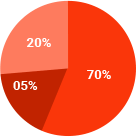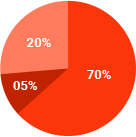Facebook Meta Ads (Sponsored Ad)
Investment Planning
Working with thousands of business companies around the world for Ideas
Investing in Facebook ads marketing requires a strategic approach to maximize your return on investment (ROI).
- Socially Responsible Investment
- Comprehensive Investment Plans
- Financial Planning for Business
- Tax Mitigation Strategies



We Support Our Clients Five Working Days
Facebook Meta Ads, formerly known as Facebook Ads, is a powerful advertising platform that allows businesses to reach their target audience on Facebook and Instagram. Sponsored ads are a type of ad that appears in the news feed of users who match the target audience specified by the advertiser.
- Socially Responsible Investment
- Comprehensive Investment Plans
- Financial Planning for Business
- Tax Mitigation Strategies
The financial flow of Facebook Meta Ads can be broken down into several key components:
- Revenue Generation: Facebook generates revenue primarily through advertising. Advertisers pay Facebook to display their ads to users, with the cost per ad impression (CPM) or cost per click (CPC) varying depending on the ad format, targeting options, and bidding strategy.
- Ad Auction: When an advertiser creates an ad, it enters an auction with other advertisers bidding for the same ad space. The highest bidder wins the ad spot, and the ad is displayed to the target audience.
- Ad Display: The ad is displayed to the target audience, and the advertiser is charged for the ad impression or click, depending on the ad format and bidding strategy.
- Payment Processing: Advertisers pay Facebook for the ad impressions or clicks through a variety of payment methods, including credit cards, PayPal, and bank transfers.
- Revenue Sharing: Facebook shares a portion of the revenue generated from ads with its partners, such as app developers and publishers.
- Operating Expenses: Facebook incurs operating expenses, including server costs, employee salaries, and marketing expenses, which are deducted from the revenue generated from ads.
Net Income: The remaining revenue after operating expenses is the net income, which is used to fund the company’s growth and development.
Facebook Meta Ads, also known as sponsored ads, are a powerful tool for businesses to reach their target audience and drive growth. With over 2.7 billion monthly active users, Facebook offers an unparalleled platform for companies to showcase their products or services and connect with potential customers.
Benefits of Facebook Meta Ads
- Increased Brand Awareness: Sponsored ads help increase brand visibility and reach a wider audience, making it an essential tool for companies looking to establish themselves in the market.
- Targeted Advertising: Facebook’s advanced targeting options allow businesses to target specific demographics, interests, and behaviors, ensuring that their ads are seen by the right people.
- Measurable Results: With Facebook’s built-in analytics, businesses can track the performance of their ads and make data-driven decisions to optimize their campaigns for better results.
- Cost-Effective: Facebook Meta Ads offer a cost-effective way to reach a large audience, making it an attractive option for businesses of all sizes.
Facebook Meta Ads, formerly known as Facebook Advertising, is a powerful platform for businesses to reach their target audience and drive conversions. With over $114 billion in revenue generated in 2021, it’s clear that someone is clicking on these ads. But how do you get them to click on yours?
Before Investing
Before investing in Facebook Meta Ads, consider whether your business model is a good fit for Facebook or Instagram. Many businesses fail at Meta advertising because it’s not a good fit for their audience. Take the time to research and understand your target audience before creating your ad campaign.
Creating Effective Ads
To create effective Facebook Meta Ads, you’ll need to set up Meta Business Suite and follow best practices. Here are some tips:
- Define your target audience: Identify your ideal customer and create targeted ads to reach them.
- Create engaging ad content: Use high-quality images, videos, and copy to grab attention and drive conversions.
- Set clear goals: Determine what you want to achieve with your ad campaign, whether it’s driving website traffic, generating leads, or increasing sales.
- Monitor and optimize: Track your ad performance and make adjustments as needed to improve results.

